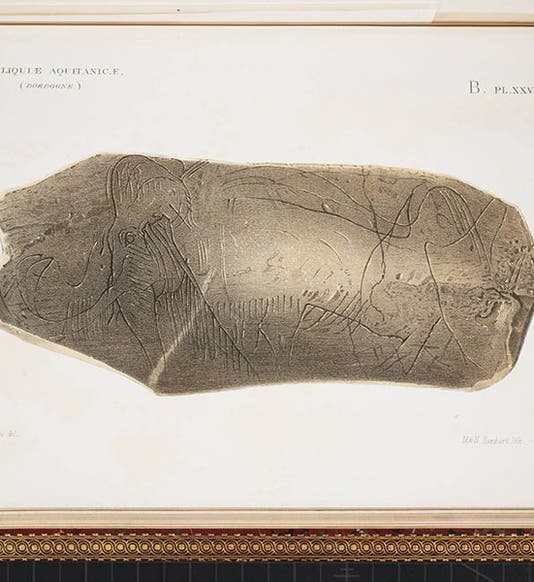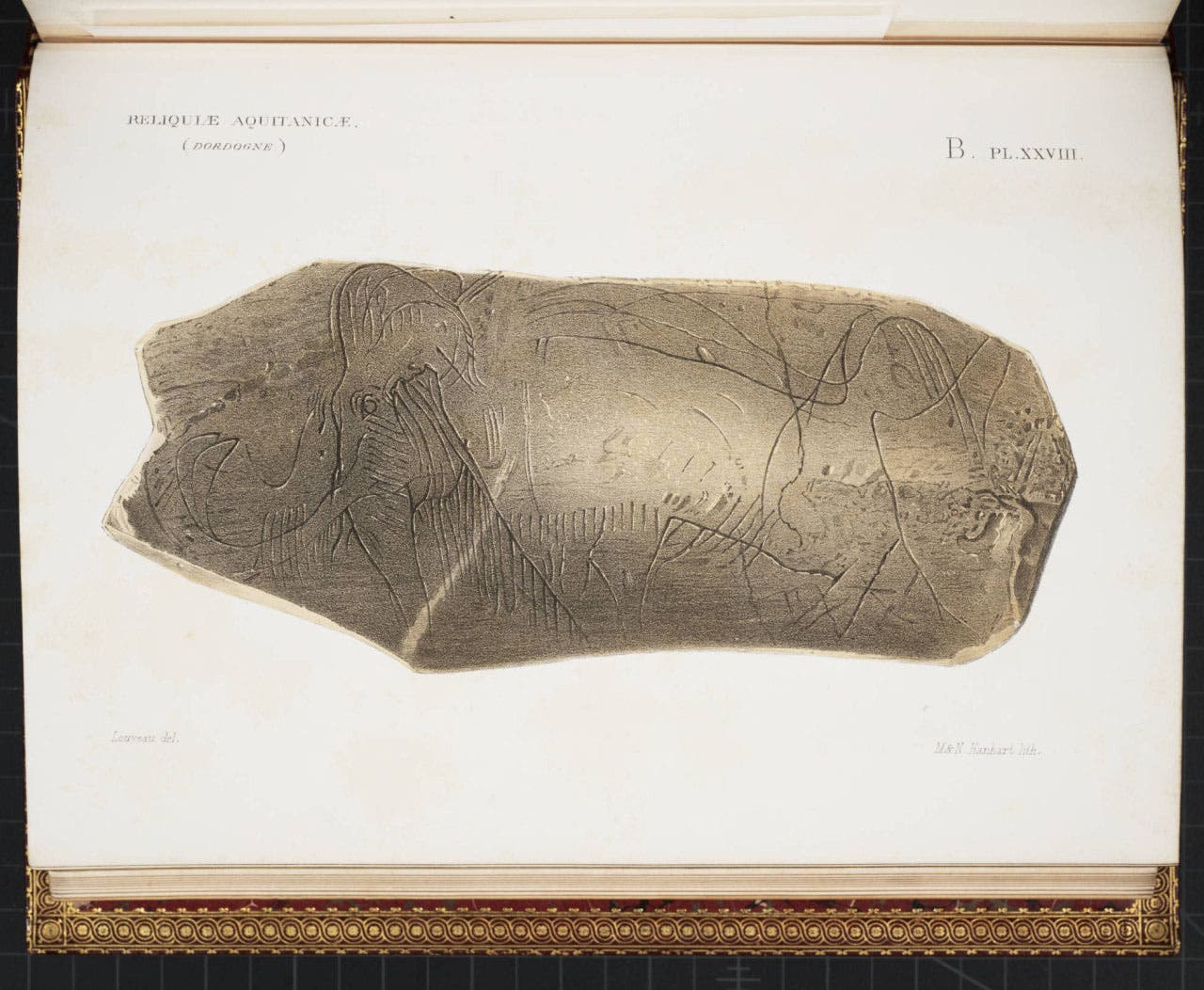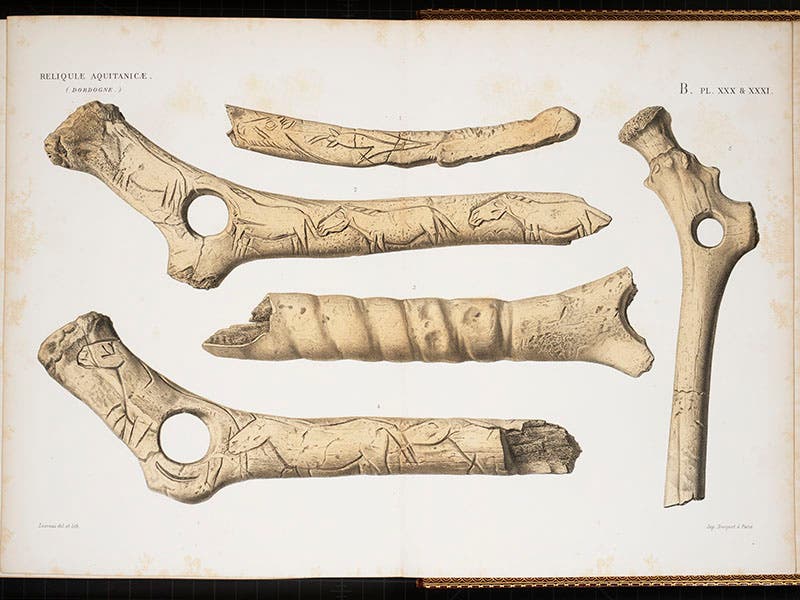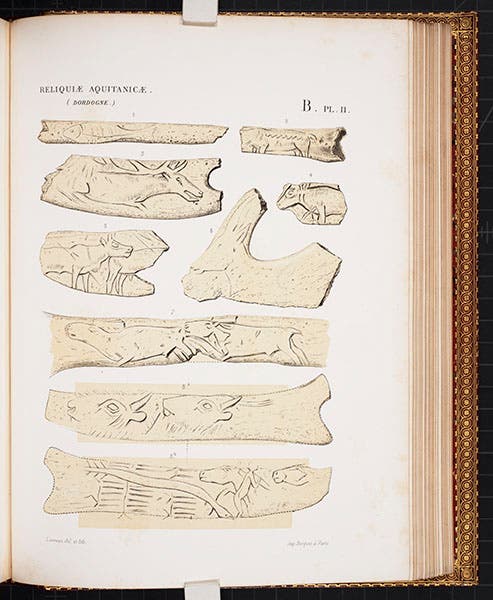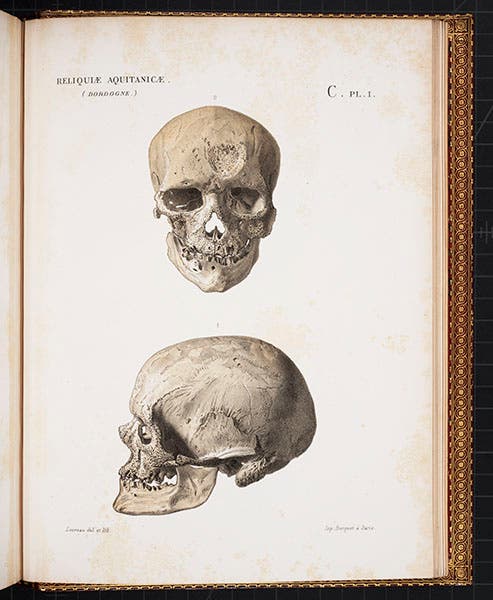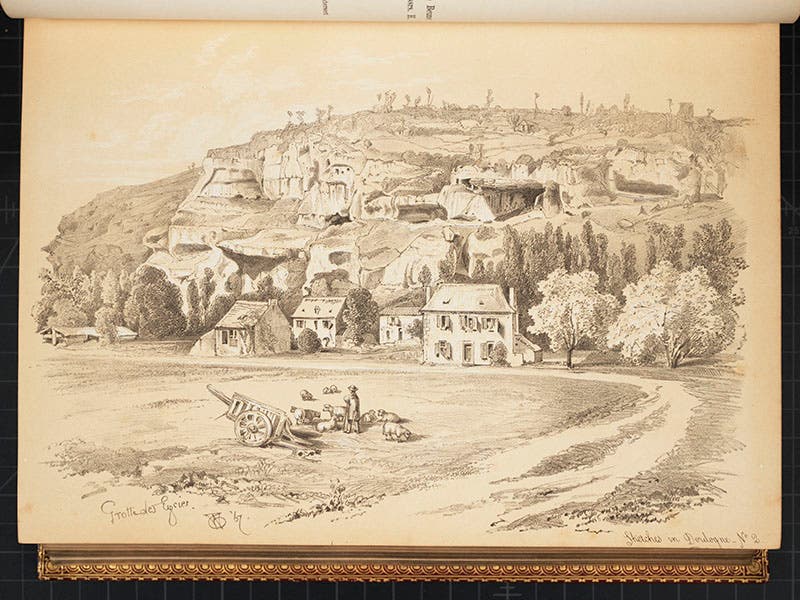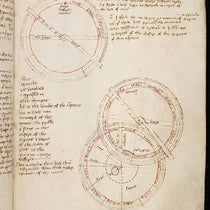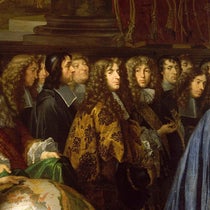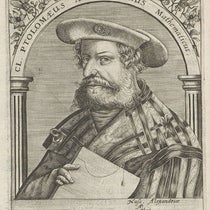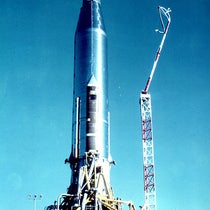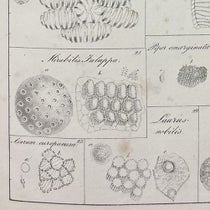Scientist of the Day - Edouard Lartet
Edouard Lartet, a French archaeologist, was born Apr. 15, 1801. Around 1859 (the very year that Charles Darwin was readying his Origin of Species for the press), Lartet began searching the limestone caves of the Dordogne region in southwestern France for human artifacts. He had the encouragement (and financial support) of an English banker, Henry Christy, and the joint enterprise was soon rewarded. Lartet found several reindeer antlers carved with the shapes of bears and deer in caves at Aurignac and Massat (second and third images). Then, in 1864, in a cave at La Madeleine, Lartet found a piece of a mammoth tusk, on which was engraved a beautiful outline of a wooly mammoth (first image above). Not only were these specimens important as being some of the first known examples of Paleolithic art, but the mammoth carving was a new kind of evidence for human antiquity, since whoever carved it was clearly living at a time when mammoths roamed the earth.
Christy died in 1865, but his estate continued the funding for Lartet and allowed for the publication of one of the most beautiful books on human anthropology ever printed, the Reliquiae Aquitanicae (1865-75), which contains illustrations of all of Lartet's discoveries, and which is the source for all the images above. Lartet’s son Louis discovered the original Cro-Magnon specimen in 1868, and the Reliquiae contains a plate showing the skull, as well as a sketch depicting the limestone caves and rock shelers that lie along the Vézère River, where nearly all Lartet’s specimens were found (fourth and fifth images below).
We displayed the work, open to the lithograph of the Madeleine mammoth, in our 2012 exhibition, Blade and Bone: The Discovery of Human Antiquity, along with a portrait of Lartet that appears as a frontispiece to the book. The engraved mammoth is also one of the rotating images on the exhibition home page.
William B. Ashworth, Jr., Consultant for the History of Science, Linda Hall Library and Associate Professor emeritus, Department of History, University of Missouri-Kansas City. Comments or corrections are welcome; please direct to ashworthw@umkc.edu.

